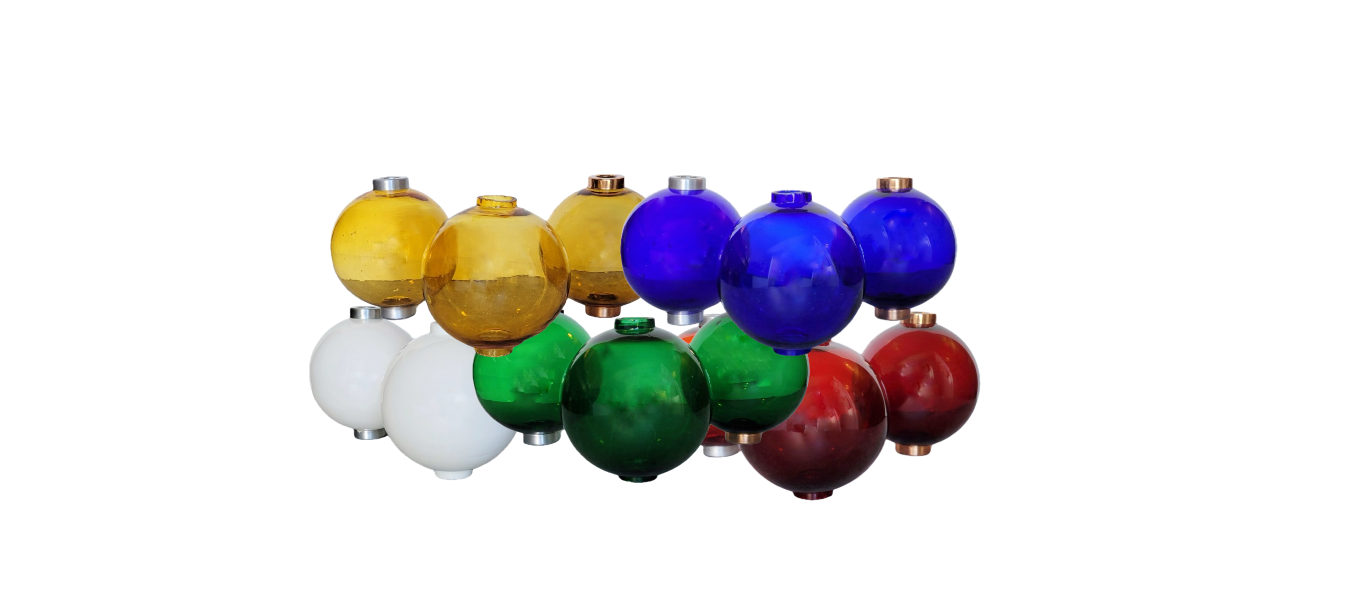In the realm of atmospheric spectacle and scientific marvel, lightning occupies a central stage. Its unpredictable and awe-inspiring displays have captivated human imagination for centuries. Yet, harnessing its power and protecting against its destructive potential has been a persistent challenge throughout history. Enter the glass lightning rod ball—a fascinating invention with a rich history that intertwines innovation, safety, and artistry.
Early Encounters with Lightning
Long before the advent of modern lightning rods, ancient civilizations grappled with the enigma of lightning. Some worshipped it as a divine force, while others feared its wrath. Historical records reveal attempts to mitigate its effects through various means, including metal-tipped rods placed atop structures.
Benjamin Franklin and the Birth of Lightning Rods
It wasn't until the 18th century that Benjamin Franklin, renowned polymath and founding father of the United States, revolutionized our understanding of lightning. Through his pioneering experiments with kites and keys, Franklin demonstrated that lightning was a form of electricity and proposed the lightning rod as a means of protection.
The Rise of Lightning Rod Balls
Initially, lightning rods were simple metal rods affixed to buildings to conduct lightning safely to the ground. However, as the technology evolved, so did the aesthetics. Glass artisans began crafting ornate glass balls to crown the tips of lightning rods, adding both functionality and beauty to these structures.
Functional and Decorative Fusion
The glass lightning rod balls served a dual purpose. Functionally, they acted as insulators, preventing lightning from traveling down the rod and potentially causing damage to the building. Meanwhile, their spherical shape reduced the risk of the rod being struck directly by lightning, dispersing the electrical charge harmlessly into the air.
Artistry in Glassmaking
Craftsmen of the 19th and early 20th centuries elevated the glass lightning rod ball to an art form. These artisans employed a variety of techniques, including blown glass, pressed glass, and intricate designs such as swirls, ribbons, and even figural shapes. Each ball was a unique masterpiece, reflecting the skill and creativity of its creator.
Symbolism and Superstition
Beyond their practical function, glass lightning rod balls carried symbolic significance for many. Some saw them as talismans warding off evil spirits and attracting good luck. Others viewed them as status symbols, adorning their homes with elaborate and expensive designs.
Legacy and Continued Use
While modern lightning protection systems have evolved beyond the traditional lightning rod and glass ball configuration, these artifacts of a bygone era still endure. Many historic buildings and homes proudly display original or replica glass lightning rod balls, serving as reminders of both technological ingenuity and artistic craftsmanship.
Conclusion: A Testament to Ingenuity and Beauty
The history of glass lightning rod balls is a testament to human ingenuity, blending practicality with artistic expression. From humble beginnings as simple metal rods to ornate glass adornments, they have evolved alongside our understanding of electricity and lightning. Though no longer the primary means of lightning protection, these captivating artifacts continue to fascinate and inspire, bridging the gap between science, art, and history.
In an ever-changing world, where technology advances at a breakneck pace, it's comforting to know that some relics of the past still stand as beacons of creativity and resilience. The glass lightning rod ball is one such relic—a shining example of innovation forged in the crucible of necessity and adorned with the beauty of human craftsmanship. Make an informed decision based on your project's needs. For expert guidance on selecting the ideal material, contact us at 877-866-3189 or sales@lightningrodparts.com. We're here to assist you!

